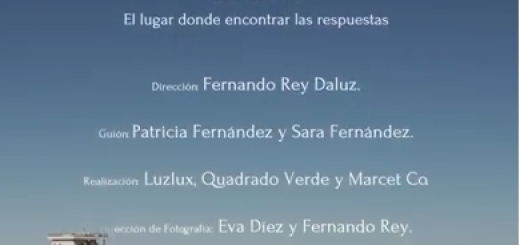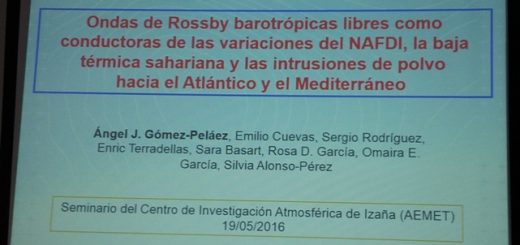The Sulphur Hexafluoride atmospheric series of Izaña (June 2007-December 2010) is published by first time
The graphic (click it to see the graphic at a larger size) shows molecular mixing ratio of atmospheric sulphur hexafluoride (SF6) measured (daily means of the night period) at Izaña Atmospheric Observatory, from June 2007 till December 2010. The unit “ppt” indicates number of SF6 molecules per every trillion of dry air molecules. The interannual trend (blue line) has been obtained from the daily mean measurements (red dots) applying a quadratic fitting. The interannual SF6 growth rate, +0.28 ppt/year, has remained almost constant during these years, and is equivalent to a growth rate of 4.1% per year.
At present, SF6 is a greenhouse gas with little importance regarding the net present radiative forcing responsible of the global warming (it is around 500 times less important than carbon dioxide). However and due to its very low concentration, long life in the atmosphere (3200 years), high power per molecule retaining infrared radiation (37.000 times more powerful than CO2), and high rate of relative growth (4.1% per year), it is a greenhouse gas to be taken into account in the future. Its molecular mixing ratio previous to the industrial revolution was smaller than 0.05 ppt (Busenberg and Plummer, 2000), because its industrial origin, that is, almost completely anthropogenic. SF6 is industrially produced and used as an electrical insulator fluid in power distribution equipments, and also it is intentionally released to study atmospheric and oceanic transport processes, because it is very useful as tracer of the origin of air mass (it is an inert gas).
An exhaustive quality control of continuous Izaña SF6 measurements comparing them (for the same date and hour) with the weekly NOAA series (2007-2010) obtained from air samples collected in flasks at Izaña has been carried out. The agreement is excellent, which confirms, in an independent way, the quality of the continuous SF6 data obtained at Izaña Atmospheric Observatory.
At Izaña observatory, a gas chromatograph with an Electron Capture Detector (ECD) is used to measure SF6 (the same GC that is used to measure N2O). An air sample is injected every 7.5 minutes, alternating between ambient air and working standard gas (high pressure tank). Every 2 weeks, the (linear for SF6) response function relative to the working standard gas is obtained using a set of 5 NOAA tertiary standard gases. The configuration and operation of the instrumental system, and the posterior data processing, are very critical due to the high accuracy required for these measurements because the very low mixing ratio of this gas in the atmosphere (around 7 SF6 molecules per trillion of dry air molecules).







